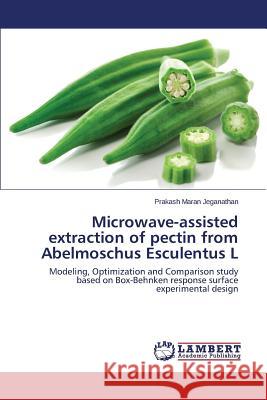Microwave-Assisted Extraction of Pectin from Abelmoschus Esculentus L » książka
Microwave-Assisted Extraction of Pectin from Abelmoschus Esculentus L
ISBN-13: 9783659157615 / Angielski / Miękka / 2014 / 68 str.
Abelmoschus esculentus L, commonly known as okra, is one of Asian multipurpose vegetable. A few studies have reported the extraction of pectin from okra pod. In this work, microwave-assisted extraction was employed to extract the pectin from okra pod. To achieve high yield of pectin, the microwave assisted extraction process parameters-microwave power, pH, time and solid-liquid ratio were investigated and optimized by Box-Behnken response surface experimental design coupled with Derringer's desired function methodology and a second-order polynomial regression equation was developed from the observed data and the adequacy was checked by various descriptive statistics in order to predict the response. The significance of independent variables and their interactions were tested by analysis of variance (ANOVA) with 95% confidence limits ( = 0.05). The prediction capability of the proposed model was verified by additional batch experiments conducted in the experimental range. To compare extracted pectin (at optimal condition) with commercial pectin, chemical composition, differential scanning calorimetric and Fourier transform infrared spectroscopy analysis was carried out in this work."
Abelmoschus esculentus L, commonly known as okra, is one of Asian multipurpose vegetable. A few studies have reported the extraction of pectin from okra pod. In this work, microwave-assisted extraction was employed to extract the pectin from okra pod. To achieve high yield of pectin, the microwave assisted extraction process parameters-microwave power, pH, time and solid-liquid ratio were investigated and optimized by Box-Behnken response surface experimental design coupled with Derringers desired function methodology and a second-order polynomial regression equation was developed from the observed data and the adequacy was checked by various descriptive statistics in order to predict the response. The significance of independent variables and their interactions were tested by analysis of variance (ANOVA) with 95% confidence limits (α= 0.05). The prediction capability of the proposed model was verified by additional batch experiments conducted in the experimental range. To compare extracted pectin (at optimal condition) with commercial pectin, chemical composition, differential scanning calorimetric and Fourier transform infrared spectroscopy analysis was carried out in this work.











